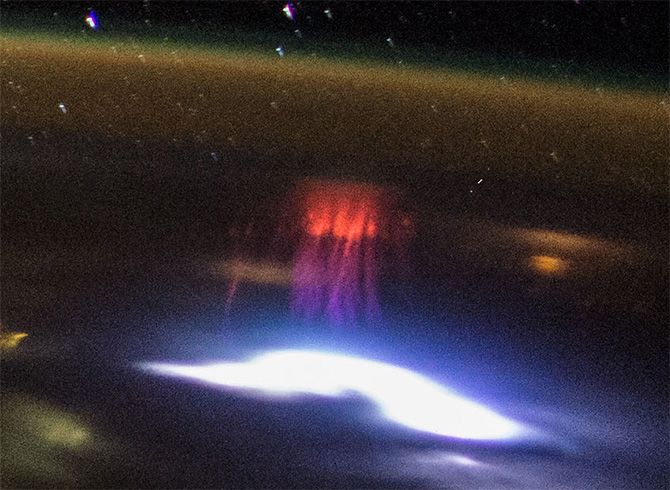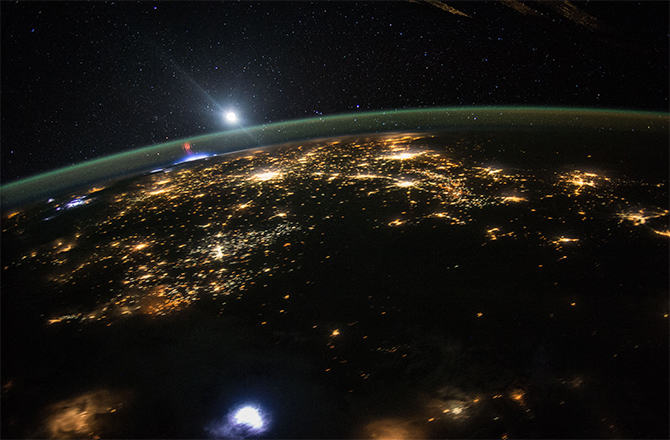Enormous Red Sprites Seen From Space (Update)

Editor's note: Updated to include a second photo of another sprite captured moments later by the same camera (added at bottom of article).
This gorgeous photo, captured from the International Space Station on the night of Aug. 10, 2015, shows an orbital view of thunderstorms over the city lights of southern Mexico as a recumbent Orion rises over Earth's limb. But wait, there's more: along the right edge of the picture a cluster of bright red and purple streamers can be seen rising above a blue-white flash of lightning: it's an enormous red sprite caught on camera!
PHOTOS: Chasing Red Sprites and Blue Jets
First photographed in 1989, red sprites are very brief flashes of optical activity that are associated with powerful lightning. So-called because of their elusive nature, sprites typically appear as branching red tendrils reaching up above the region of an exceptionally strong lightning flash. These electrical discharges can extend as high as 55 miles (90 kilometers) into the atmosphere, with the brightest region usually around altitudes of 40–45 miles (65–75 km).
Sprites don't last very long — 3–10 milliseconds at most — and so to catch one (technically here it's a cluster of them) on camera is a real feat... or, in this case, a great surprise!
PHOTO: Mysterious Sprite Photographed by ISS Astronaut
Sprites have been photographed from the ISS before (it's a great place from which to observe these phenomena, which are often obscured from the ground by storm clouds) but this is one of the best images of one I've seen yet.
Breaking space news, the latest updates on rocket launches, skywatching events and more!

ANALYSIS: Origin of Mysterious Jellyfish Lightning 'Sprites' Revealed
(And in case you're wondering that's the moon (not the sun) shining brightly in the star-filled sky, and the yellow-green light surrounding the planet isn't aurora — it's a different phenomena called airglow.)
Learn more about the history of sprite research at the University of Alaska Fairbanks website.
UPDATE (11:50 p.m. ET): Just a few minutes earlier the same storm had created another sprite outburst, which was amazingly also captured on camera as the ISS was moving southeast:

This article was provided by Discovery News.
Join our Space Forums to keep talking space on the latest missions, night sky and more! And if you have a news tip, correction or comment, let us know at: community@space.com.

Jason Major is a big fan of all things to do with astronomy and space exploration. He has a particular love of astrophotography, and he's very good at it too! You can find all of Jason's stellar photographs of the solar system on his website, Lights in the Dark, where he posts space news and images regularly.
